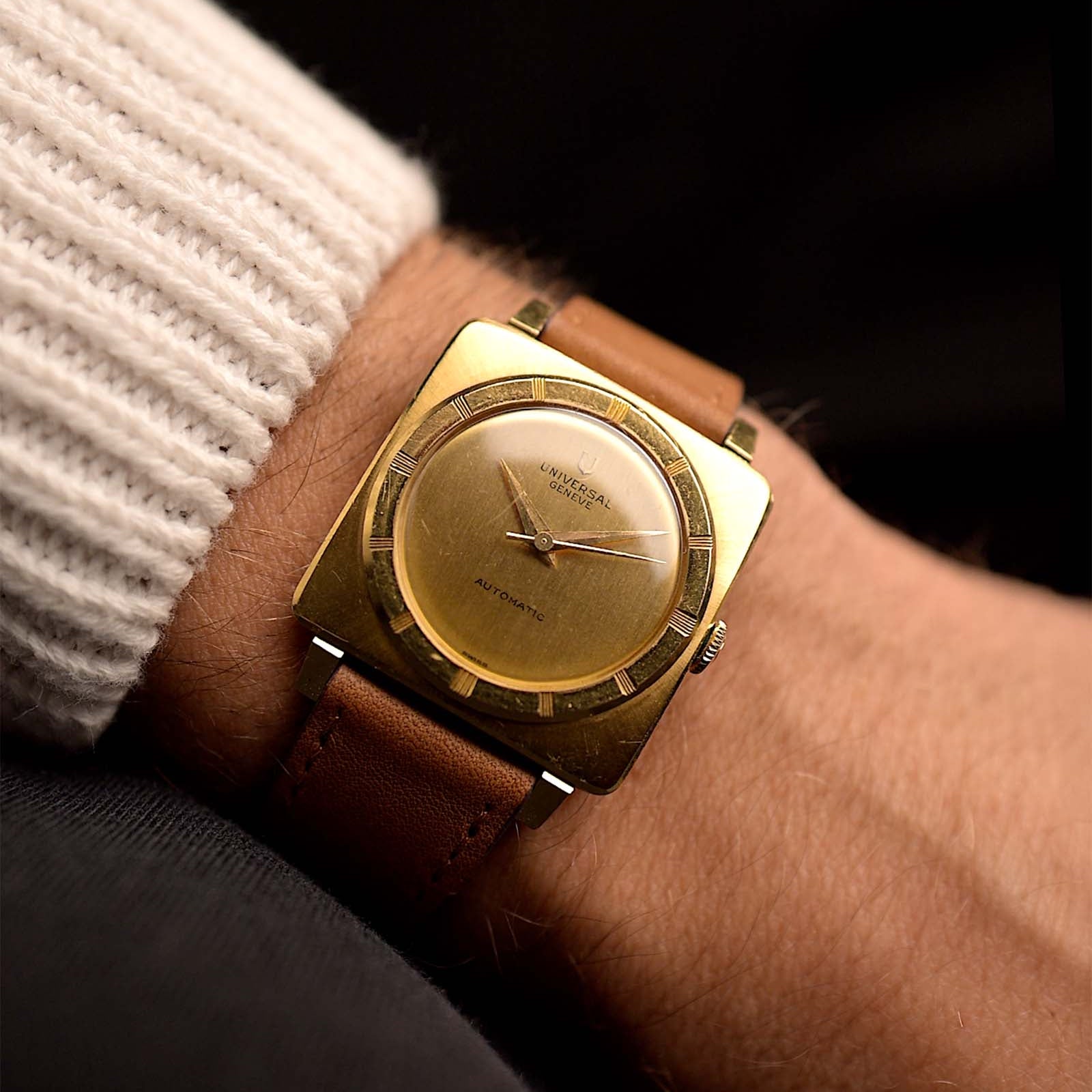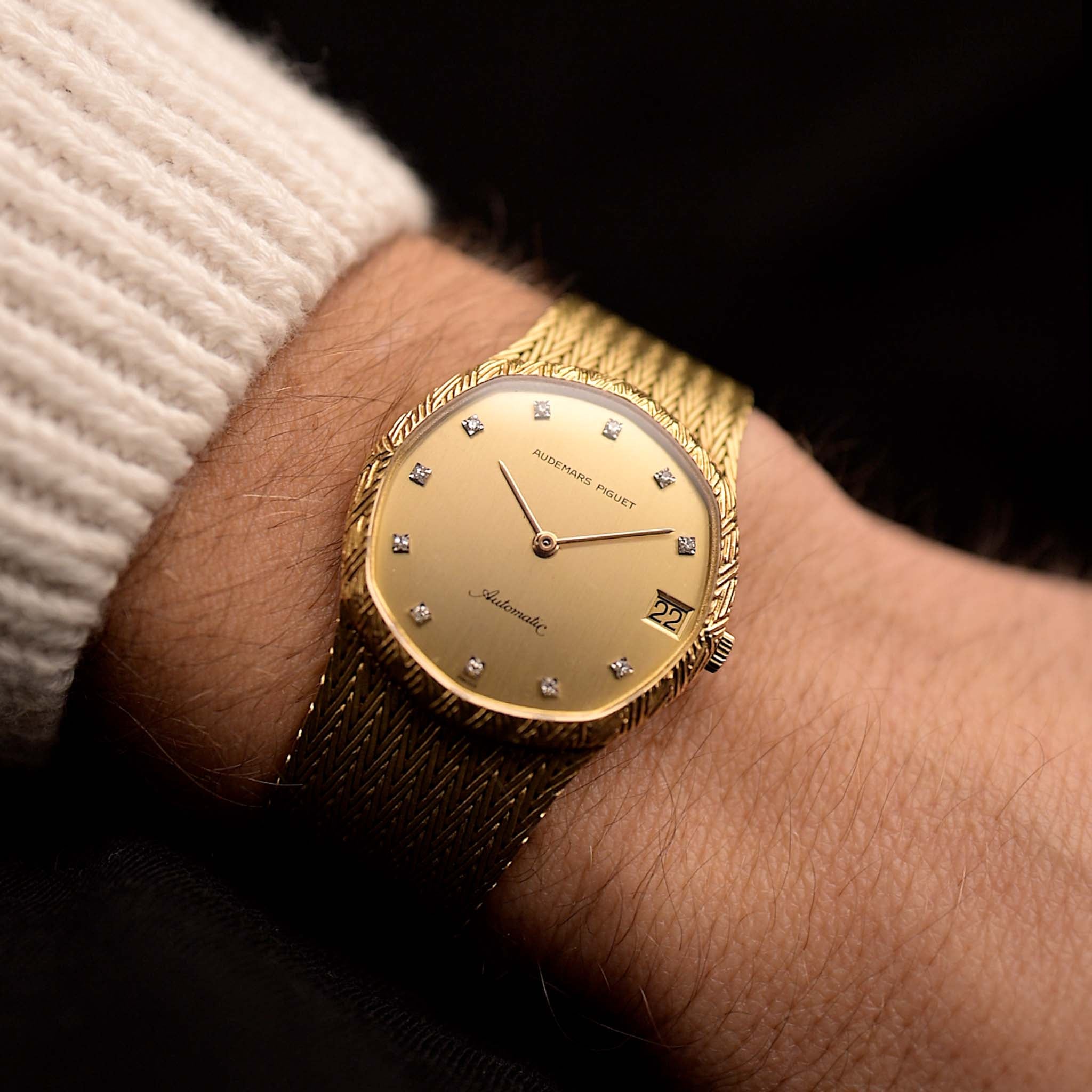This is IV. and last part of the series on the design and history of the transitional 1950s watch world. The last piece missing for a complete dial are the hour markers. The Fifties were a period still rich in marker variability, a cornucopia of styles compared to the modern world in which markers are an often overlooked feature.
September 21, 2021
Watches of the 1950s - Hour Marker
 Marcus Siems @siemswatches
Marcus Siems @siemswatches
Collector, Author, Data Analyst
Let’s talk about time. How did the watch world look like back in the post-war era of the Fifties? And I mean not only the timeless icons everybody remembers but the watch market in its entirety. Which design elements were the frontrunners of the time? In this series I want to answer this question with the loupe of quantitative data-analysis and data from over 2500 watches publicly listed on chrono24[1], summarizing the last 80 years of watchmaking.
 The Fifties style has been defined by dress watches, with glaring white dials and edgy dauphine hands. Photo @goldammer.me
The Fifties style has been defined by dress watches, with glaring white dials and edgy dauphine hands. Photo @goldammer.me
So far we have defined the 1950s as a very unique decade still battling most modern design styles. Like the small Gallic village, the 1950s stand strong with their white-dialed dress watches, fighting everyone off with the clear-cut dauphine hands it sports so well. It’s a transitional period. But one last detail is still missing until we can call it a complete series.
The final mark of time... Hour markers truly define the vintage character of a timepiece. Most modern watches come in flavors of three types of markers: stick, circular and all-out numerals. There is not much variation in the modern watch world when it comes to this particular element. However, looking a good 70 years back that was still very different. So many marker versions, giving rise to a cornucopia of light-reflecting, expressive and character-forming choices.
 Figure 4. Distribution of marker styles between 1940 and 1975. Both stick and dagger markers are the most common in the 1950s. Nevertheless, almost every marker type is playing some role at the time. Check out also[2,3].
Figure 4. Distribution of marker styles between 1940 and 1975. Both stick and dagger markers are the most common in the 1950s. Nevertheless, almost every marker type is playing some role at the time. Check out also[2,3].
Before 1970 there have been plenty of designs that very much are extinct today. The dagger, together with the related arrow marker, is the hot design of the decade: A clear triangular shape, as accurate as it gets in form and function. And for the geometry nerds among you: With a concave upper end the dagger is just the right complementary to the convex dauphine hand – the favorite hand-style of the decade. A dynamic duo that could beat anyone!
Interestingly, the modern favorite – the stick marker – starts its rise to glory in the 1950s as well. And it makes a lot of sense. The stick marker is the most simplistic style possible and the perfect marker to let the rest of the dial speak. It is a feature for the background, functional yet leaving the stage for other design elements to shine. However, as this design is very much an all-time classic on every decades dial onward I’d still like to highlight the dagger as the most “1950s marker”. It is just too distinct for this decade to call the stick marker the winner.
 The characteristic Fifties dress watch features dauphine hands, dagger hour markers and a white dial. Importantly, this "average" watch is not just a number; Case and point by this typical 1950s Omega Seamaster with the classic quarter numerals. By the way, did you already select this example as the prototypical Fifties watch in the very first part of the series? Photo @goldammer.me
The characteristic Fifties dress watch features dauphine hands, dagger hour markers and a white dial. Importantly, this "average" watch is not just a number; Case and point by this typical 1950s Omega Seamaster with the classic quarter numerals. By the way, did you already select this example as the prototypical Fifties watch in the very first part of the series? Photo @goldammer.me
Long story short, you might have learnt that the 1950s gentleman liked to wear his white-dialed dress watch, with dauphine hands and dagger hour marker, to every occasion. And it truly still was a watch for every occasion at the time. As we’ve seen in this series most tool-watches are just starting to be conceived or produced. Any watch is still THE tool that cannot be missed and it has to be elegant all the time.
The average gentleman is not just yet going to swim with his watch and on adventurous vacations to mountaintops, sandy islands or snow-clad hike trails. The world is still small and the need for specialized watches is manageable.
Overall, we can view the 1950s very much as a unique and transitional period in watch making. It is countering the necessity for sturdy tool-watches during the war-years and at the same time on the brink of utility-inspired watches to become fashionable or at least mass-marketable. It is a time of coming back to old glory, good tradition and a tad of spite for new designs. And who could blame those gentlemen? After years on the battlefields you would probably want a piece of peace back as well. Even if it just suits your wrist.
 The Universal Geneve Polerouter, an icon of the time that almost has it all... in terms of Fifites characteristics. Photo @goldammer.me
The Universal Geneve Polerouter, an icon of the time that almost has it all... in terms of Fifites characteristics. Photo @goldammer.me
And here is one more thing we should not forget: The most iconic 1950s vintage pieces are not necessarily the most suited ambassadors of their time. All these sought after references have become so special because they stand out of the pack and have not been common taste. The 1950s Rolex Submariner is a rare watch. A 1950s “arrow-hand” Speedmaster is rare. Not many pilots were granted an SAS Polarouter to fly over the North Pole. These pieces are still known today because they were ahead of their time, got connected to very special stories and because they showed a direction of what watch design can become. They grant a glimpse of modern preferences, a window through time. The 1950s as a transitional period, evident even in its most glaring stars.
Check out the the other parts of the series here:
Part I: A Matter of Style
Part II: Dial Color
Part III: Hot Hands
Part IV: Hour Marker
References
[1] Watches from Chrono24, extracted 2020 Nov. 29th; Karlsruhe, Germany;
[2] Watch 101: Different Types of Watch Indices; Caitlyn Bazemore, CrownAndCaliber;
https://blog.crownandcaliber.com/different-types-of-watch-indices/
[3] Watch Hour Marker Types; The Watch Club – By SwissWatchExpo;
https://www.swisswatchexpo.com/TheWatchClub/2020/10/08/watch-hour-marker-types/
All rights on text and graphics reserved to the Author




























Leave a comment